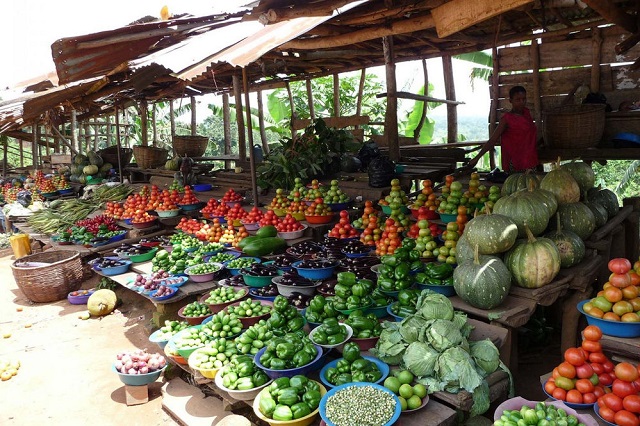Economy
Uganda’s Inflation Averages 3.4% in FY2024/25 Amidst Rising Food and Service Costs
Uganda’s headline inflation for the 2024/25 financial year averaged a moderate 3.4%, indicating controlled price growth despite persistent upward pressure from food and core service costs. The Uganda Bureau of Statistics (UBOS) reported today that the financial year concluded with headline inflation at 3.9% in June 2025, a slight increase from 3.8% in May.
Samuel Echoku of UBOS highlighted the key drivers, stating, “The year’s average of 3.4% was shaped by persistent increases in food crop prices, a steady climb in core inflation, and mild price shifts in energy, fuel, and utility items.”
The food crop and related items category bore the brunt of price increases throughout the fiscal year, registering an annual inflation rate of 4.7% in June, up from 4.3% in May. Essential foodstuffs saw notable jumps, with dry beans inflation rising to 12.1% in June (from 9.2% in May) and cooking bananas (matoke) soaring to 37.7% (from 29.8%). Passion fruits reversed a deflationary trend, climbing to 5.3% in June from -2.1% in May. Irish potatoes, while still deflationary, showed a milder rate of -0.6% compared to -5.5% in May.
Core inflation, which excludes volatile food and energy prices, remained steady at 4.2% in both May and June 2025. However, within this category, service-related costs exhibited significant movement. Outpatient care services notably rose to 7.9% in June from 4.5% in May, while restaurants and accommodation saw a slight increase to 4.7% from 4.6%. Conversely, other goods within the core category experienced marginal declines. Despite this, staple items like sugar (up 3.9% from a previous decline of 4.0%), rice (up 7.6% from 3.7%), and maize flour (up 12.6% from 7.4%) recorded substantial annual increases.
Inflation for Energy, Fuel, and Utilities (EFU) largely remained negative throughout the year, closing at -0.2% in June, a slight rise from -0.9% in May. While firewood inflation slowed to 7.8% and charcoal prices rose to 4.6%, petroleum products like petrol (-6.6%), diesel (-4.7%), and liquefied gas (-4.9%) continued to register price declines in June.
On a monthly basis, Uganda’s headline inflation saw a sharp fall to 0.1% in June, down from 0.5% in May. This deceleration was primarily attributed to a steep drop in food crop inflation, which declined by -2.2% after a rise of 0.6% in May. Key contributors to this monthly food price deflation included cooking bananas (down -9.3%), fresh beans (down -24.3%), mangoes (down -12.8%), cabbage (down -13.9%), and tomatoes (down -4.2%). Conversely, monthly core inflation rose by 0.3% in June, mainly due to rising service prices.
According to UBOS’s COICOP (Classification of Individual Consumption by Purpose) analysis, several divisions contributed significantly to the 3.9% annual inflation rate in June. These included housing, water, electricity, gas, and other fuels (up to 2.9%), recreation, sport, and culture (up to 2.8%), information and communication (up to 1.7%), and transport (up to 2.9%). Health services also rose to 4.6%, and restaurants and accommodation services climbed to 4.7%.
Despite some sector-specific volatility, the FY2024/25 average inflation rate of 3.4% remained within the Bank of Uganda’s target range, signaling continued macroeconomic stability. However, UBOS cautions that risks persist, including potential weather-related disruptions, food supply chain bottlenecks, and ongoing increases in service prices, which could influence future inflation trends. As Uganda embarks on FY2025/26, policymakers are expected to closely monitor these developments, particularly amidst ongoing economic recovery and uncertainties in global fuel markets.
Comments



























